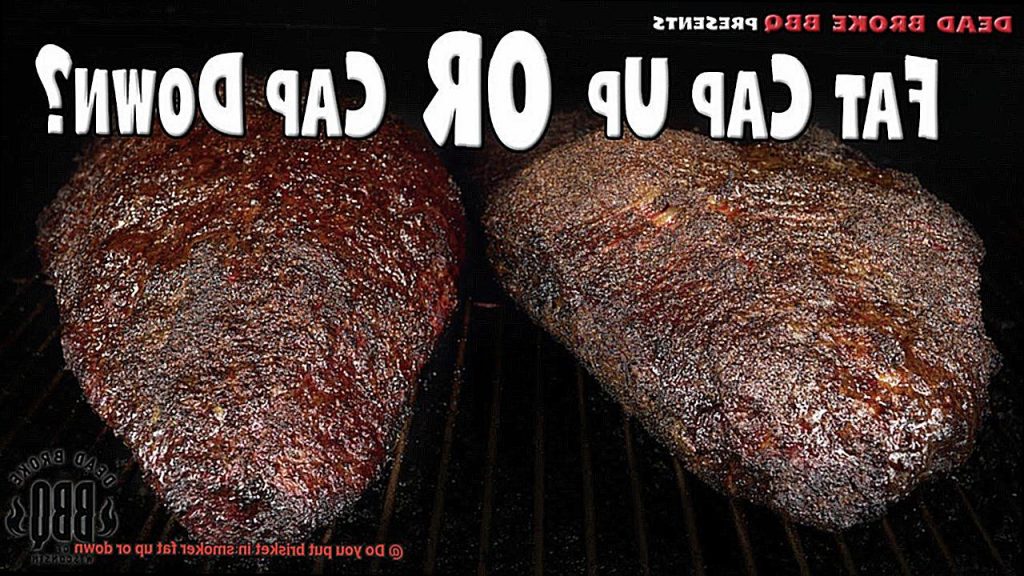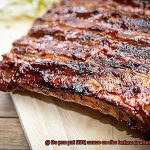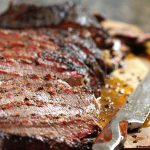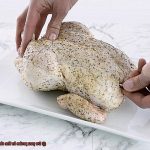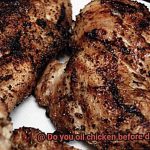Are you a pitmaster or a barbecue enthusiast on a mission to perfect your brisket smoking skills? If so, you’ve probably been caught up in the age-old debate: should you put your brisket in the smoker fat up or down? It’s a topic that has sparked intense discussions and passionate arguments among grillers and smokers for years.
But fear not, because we’re here to settle this once and for all. We’ve delved deep into the science behind smoking brisket to uncover the truth about which side to place your meat on in the smoker. Is it really just a matter of personal preference? Or is there a logical reason why some swear by fat up while others insist on fat down?
In this article, we’ll explore both sides of the argument and provide expert tips on how to achieve mouth-watering results. From understanding the different cuts of brisket to the impact of heat and smoke on meat fibers, we’ll cover all the essential factors that affect your brisket’s tenderness, moisture, and flavor.
So, whether you’re a seasoned pro or an amateur cook looking to impress your guests, keep reading to discover everything you need to know about putting brisket in the smoker – fat up or down.
Contents
Factors to Consider When Deciding Where to Place the Fat Side of the Brisket
Smoking brisket is a culinary journey that requires patience, skill, and attention to detail. One of the most crucial decisions you’ll make in this journey is whether to place the fat side up or down. Although it may seem like a simple choice, it can have a significant impact on the final product. Here are the essential factors to consider when deciding where to place the fat side of the brisket in the smoker.
Firstly, the fat acts as a natural barrier, protecting the meat from drying out during the cooking process. For this reason, it is critical to ensure that the fat is facing up so that it can do its job effectively. The fat will also melt down into the meat, adding flavor and moisture.
Secondly, consider the shape of your brisket. If one side has a thicker layer of fat than the other, it’s best to place it facing up. This will ensure that heat distributes evenly throughout the meat, resulting in a tender and consistent end product.
The type of smoker being used also plays a significant role in determining where to place the fat side of the brisket. If you’re using a vertical smoker with a water pan, placing the fat side down may be beneficial as it can prevent flare-ups from dripping fat. On the other hand, if you’re using a traditional horizontal smoker, placing the fat side up is generally recommended.
Finally, personal preference also plays a role in deciding where to place the fat side of the brisket. Some pitmasters swear by placing it fat side down for a more intense smoky flavor, while others prefer placing it fat side up for a more tender and juicy end result.
Placing the Fat Side Up in Vertical Smokers
As a true aficionado of the art of smoking brisket, you know that every little detail can make the difference between a delicious masterpiece and a culinary disaster. One of the most hotly debated topics among pitmasters is whether to place the fat side up or down in vertical smokers. After extensive research and experience, I am here to help you understand the advantages and disadvantages of each method, so you can make an informed decision.
When it comes to placing the fat side up in vertical smokers, there are several advantages to consider. Firstly, it acts as a natural barrier between the meat and the heat source, preventing any uneven cooking or burning. In addition, this method allows for even cooking from all sides while keeping the meat moist by allowing the rendered-down fat to baste it.
On the other hand, some experts argue that placing the fat side down can be beneficial too. This technique primarily applies to horizontal smokers where the heat source is located on one side. The fat acts as an insulator, preventing moisture from escaping and protecting the meat from drying out.
Ultimately, there is no one right answer when it comes to placing the fat side up or down in vertical smokers. It depends on your personal preference and smoker type. However, if you’re unsure which method to try first, we recommend experimenting with both methods to see which one works best for your particular setup and taste preferences.
Placing the Fat Side Down in Horizontal Smokers
If you’re an avid smoker of brisket in a horizontal smoker, you’re probably familiar with the debate over whether to place the fat side up or down. As an expert on this subject, I’m here to share with you why pitmasters usually place the fat side down and some tips on how to do it right.
The reason behind placing the fat side down is simple yet crucial. Fat acts as a natural barrier between the meat and the heat source, ensuring even cooking and basting. However, when the fat melts and drips onto the meat, it can leave it greasy and dry. By positioning your brisket with the fat side facing down, you prevent this from happening while also using it as insulation to prevent moisture from escaping and protecting your meat from drying out.
To ensure that your brisket cooks evenly, start by trimming off any excess fat before seasoning it with your favorite rub or marinade. Once ready, position it in the smoker with the fat side facing down. This will allow the fat to melt and drip onto the fire, infusing your brisket with smoky flavor.
While most pitmasters prefer to leave their brisket with the fat side down throughout the entire cooking process, some choose to flip it halfway through to ensure even cooking on both sides. This is an optional step that you can experiment with depending on your preference.
In summary, here are some key takeaways for placing the fat side down in a horizontal smoker:
- Fat acts as a natural barrier and insulator for your meat.
- Position your brisket with the fat side facing down to prevent grease from dripping onto your meat.
- Trim off excess fat before seasoning your brisket.
- Experiment with flipping your brisket halfway through if desired.
Quality of Meat Matters
Well, get ready because the quality of the meat matters when it comes to smoking brisket. As an expert in this field, I can tell you that selecting the right meat can make all the difference in creating mouth-watering brisket.
Firstly, always opt for high-quality brisket with good marbling. This helps keep your meat moist and flavorful throughout the smoking process. No one wants dry and tasteless brisket, right? Also, it’s important to choose a brisket that is the right size and thickness for your smoker. A brisket that’s too small may dry out quickly, while a larger one could cook unevenly.
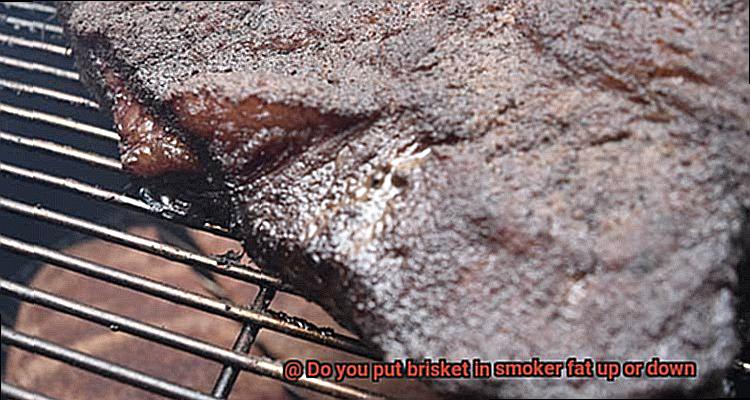
Once you’ve selected the perfect brisket, it’s time to prepare it for smoking. Trimming off any excess fat is crucial for achieving a perfectly smoked brisket. While some fat is essential for keeping the meat moist, too much can lead to uneven cooking and flare-ups. So, leave a thin layer of fat but trim any excess.
Now, let’s talk about the age-old debate of whether to place your brisket fat side up or down in the smoker. Some argue that placing it fat side up allows the fat to melt and baste the meat as it cooks. Others say that placing it fat side down lets the meat absorb more smoke flavor. Ultimately, it comes down to personal preference, so experiment with both methods to see what works best for you.
In summary, if you want to create delicious and succulent brisket, remember that quality meat and proper preparation are key. Choose high-quality meat with good marbling, select the right size for your smoker, trim off excess fat, and experiment with placing your brisket fat side up or down.
Personal Preference and Experimentation
When it comes to smoking brisket, one of the biggest debates is whether to put it in the smoker fat side up or down. However, there’s no one-size-fits-all answer to this age-old question. Some pitmasters prefer fat down, as they believe it helps insulate the meat from direct heat and prevents it from drying out. Others swear by fat up, claiming that it bastes the meat as it cooks and adds flavor.
Ultimately, the decision of whether to smoke brisket fat up or down is a matter of personal preference and experimentation. What works for one pitmaster may not work for another, and there’s no right or wrong answer.
If you’re just starting out in the world of smoking brisket, it’s recommended that you try both methods to see which yields the best results. Start with a small 4-6 pound brisket and divide it into two halves. Smoke one half fat up and the other half fat down, taking notes on temperature, cook time, and overall flavor. This will help you determine which method works best for your taste preferences and cooking style.
It’s also important to consider the quality of the meat when deciding whether to put it fat up or down. A well-marbled piece of brisket may benefit from being cooked fat down, while a leaner cut may fare better with the fat side up.
Regardless of which method you choose, patience and attention to detail are essential when smoking brisket. Monitor the temperature closely and adjust as needed. Don’t be afraid to experiment with different rubs, woods, and cooking times until you find what works best for you.
Monitoring During the Cooking Process
Smoking brisket is not just about cooking a piece of meat, it’s an art that requires patience, attention to detail, and proper monitoring. Monitoring during the cooking process is crucial in achieving a perfectly cooked and flavorful result. Let’s explore why this is so important.
Temperature Control
First off, temperature control is key to smoking a brisket to perfection. You want to make sure that your smoker is maintaining a consistent temperature throughout the cooking process. Fluctuations in temperature can cause the meat to dry out or become overcooked. Using a meat thermometer can help you keep track of the internal temperature of the brisket and ensure that it reaches the perfect level of doneness.
Smoke Production
Next, smoke production is what gives your brisket that distinct smoky flavor. However, too much smoke can overpower the meat, while too little smoke can result in a bland taste. Monitoring the amount of smoke production can help you strike the right balance and achieve that perfect flavor profile.
Fat Cap Placement
The fat cap on your brisket is another important factor to consider when monitoring during the cooking process. Some pitmasters prefer to place the fat cap facing up, while others swear by placing it facing down. Keeping an eye on this can help you decide what works best for your taste buds. Placing it with fat cap up allows for more flavor as the fat drips down into the meat during cooking. On the other hand, placing it with fat cap down protects it from drying out and prevents burning.
Avoiding Frequent Door Opening
Lastly, resist the temptation to open your smoker frequently during the cooking process. Every time you open it, heat and smoke escape, which can affect both cooking time and flavor. However, it’s necessary to check on your brisket periodically to ensure that it’s cooking properly and not burning.
XA0Yds16KCU” >
Conclusion
In the end, the great brisket debate of fat up or down comes down to personal preference and experimentation. But don’t let that fool you into thinking it’s an easy decision. There are several factors to consider when deciding where to place the fat side of your brisket in the smoker.
The fat acts as a natural barrier, protecting your meat from drying out during the cooking process. To get the most out of this feature, make sure to position your brisket with the fat facing up. This way, it can do its job effectively and keep your meat juicy and flavorful.
However, smokers come in all shapes and sizes, which means there is no one-size-fits-all answer. If you’re using a vertical smoker, placing your brisket with the fat side up allows for even cooking from all sides while keeping it moist by allowing rendered-down fat to baste it. But if you’re working with a traditional horizontal smoker, placing the fat side down is generally recommended since it prevents grease from dripping onto your meat and protects it from drying out.
No matter which method you choose, monitoring is key to achieving a perfectly cooked result. Keep an eye on temperature control, smoke production and avoid opening the door too often to ensure that you get that mouth-watering flavor every time.
Lastly, remember that quality meat and proper preparation are essential ingredients in creating delicious brisket. Choose high-quality cuts with good marbling, select the right size for your smoker, trim excess fat and experiment with different placements until you find what works best for you.

